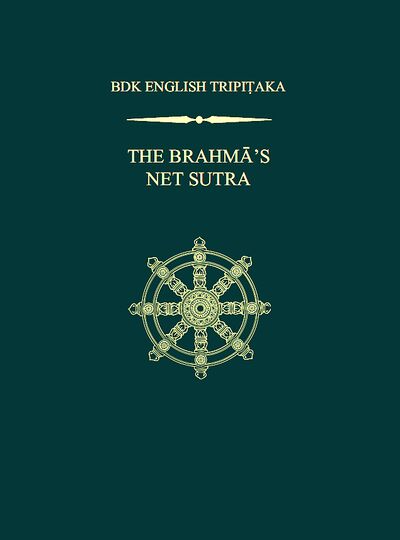|
|
| Line 28: |
Line 28: |
| ***{{i|9. The Mental State of Joy|12}} | | ***{{i|9. The Mental State of Joy|12}} |
| ***{{i|10. The Summit Mental State|12}} | | ***{{i|10. The Summit Mental State|12}} |
| | |
| | **{{i|The Ten Nourishing Mental States|13}} |
| | ***{{i|1. The Mental State of Kindness|13}} |
| | ***{{i|2. The Mental State of Pity|13}} |
| | ***{{i|3. The Mental State of Joy|14}} |
| | ***{{i|4. The Mental State of Nonattachment|14}} |
| | ***{{i|5. The Mental State of Giving|15}} |
| | ***{{i|6. The Mental State of Caring Speech|15}} |
| | ***{{i|7. The Mental State of Beneficence|15}} |
| | ***{{i|8. The Mental State of Sameness|16}} |
| | ***{{i|9. The Mental State of Concentration|16}} |
| | ***{{i|10. The Mental State of Insight|16}} |
| | **{{i|The Ten Adamantine Mental States|17}} |
| | ***{{i|1. The Mental State of Faith|17}} |
| | ***{{i|2. The Mental State of Mindfulness|18}} |
| | ***{{i|3. The Profound Mental State|18}} |
| | ***{{i|4. The Mental State of Penetrating Illumination|18}} |
| | ***{{i|5. The Direct Mental State|19}} |
| | ***{{i|6. The Mental State of Nonretrogression|19}} |
| | ***{{i|7. The Mental State of the Great Vehicle|19}} |
| | ***{{i|8. The Markless Mental State|20}} |
| | ***{{i|9. The Mental State of Wisdom|20}} |
| | ***{{i|10. The Indestructible Mental State|21}} |
| | **{{i|The Ten Grounds|21}} |
| | ***{{i|1. The Ground of the Equality of the Essence|21}} |
| | ***{{i|2. The Ground of the Skillful Wisdom of the Essence|23}} |
| | ***{{i|3. The Ground of the Luminosity of the Essence|25}} |
| | ***{{i|4. The Ground of the Knowability of the Essence|26}} |
| | ***{{i|5. The Ground of the Wisdom-illumination of the Essence|28}} |
| | ***{{i|6. The Ground of the Floral Radiance of the Essence|29}} |
| | ***{{i|7. The Ground of the Completion of the Essential Nature|31}} |
| | ***{{i|8. The Ground of the Buddha’s Roar of the Essential Nature|32}} |
| | ***{{i|9. The Ground of the Flower Ornamentation of the Essence|34}} |
| | ***{{i|10. The Ground of Entry into the Buddha Realm of the Essential Nature|35}} |
| |StopPersonRedirects=No | | |StopPersonRedirects=No |
| }} | | }} |


